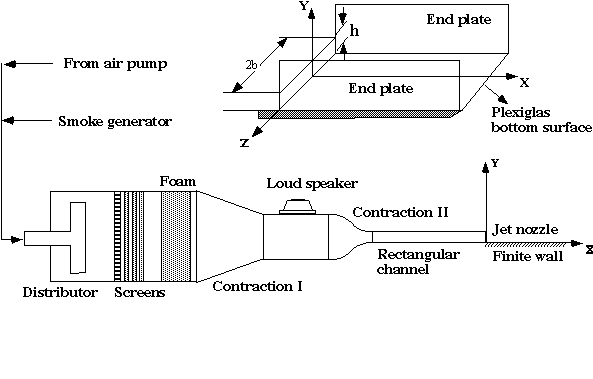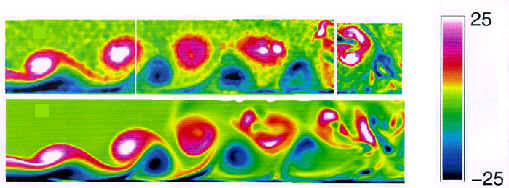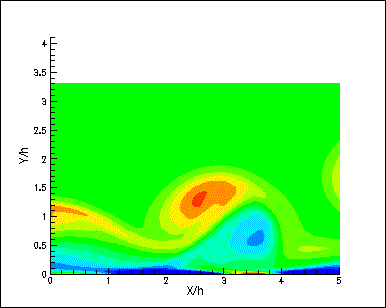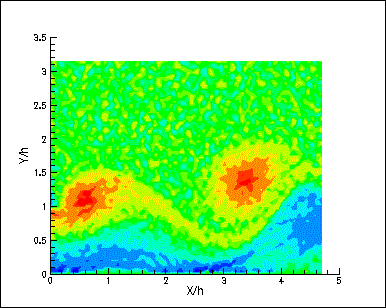Wall Jet
Introduction:
A wall jet is a stream of fluid blown tangentially along a wall and it has a wide range of applications, such as boundary-layer separation control over a wing, film cooling on turbine blades, etc. There are two distinct regions in the wall jet configuration: first, an outer free shear layer that is subjected to the inviscid Kelvin-Helmholtz instability and the formation of large scale vortices; and an inner layer that behaves like a viscous boundary layer. The interaction between large scale structures from the outer layer and inner layer leads to the eventual laminar-to-turbulence transition. In the following, a plane wall jet flow is measured using the Particle Image Velocimetry (PIV), and the experimental data are compared to a direct numerical simulation results calculated using the Navier-Stokes equations. The following schematic shows the experimental setup of the wall jet. Color-coded contour plots are used to characterize the vorticity distrinbution inside the wall jet flow. The red color spectrum represents vorticity rotating in the counterclockwise direction, while the blue spectrum shows the vorticity in the clockwise direction.




